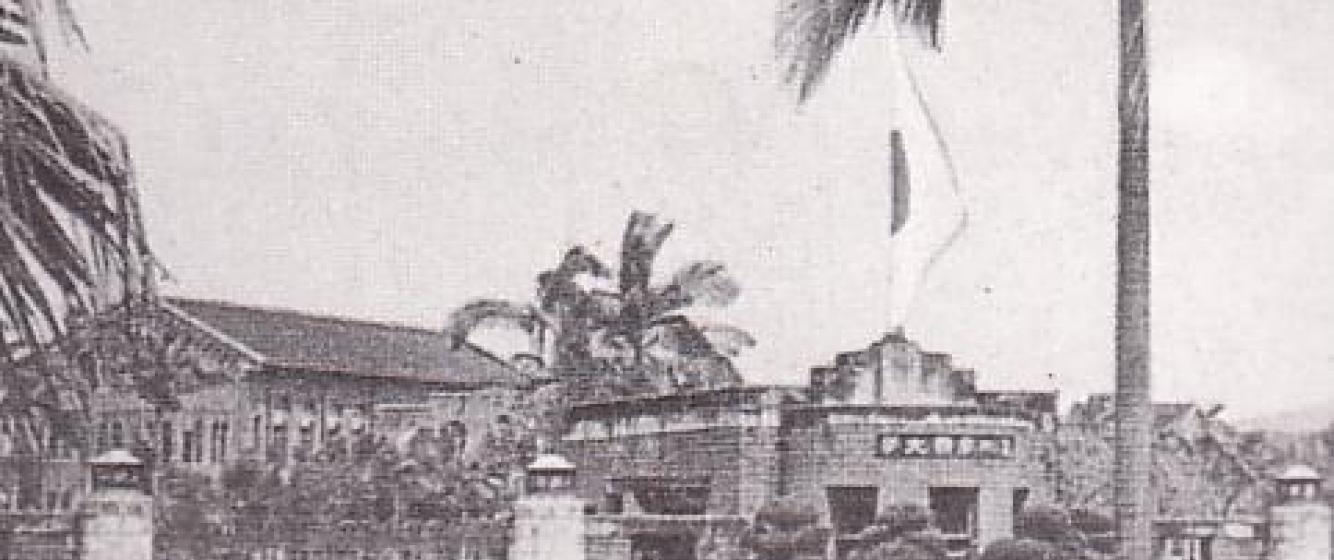
Taihoku Imperial University (Photo from Wikicommons)
Revisiting the Discontinuity of Japanese Historical studies of the Philippines: Wartime “Nanyō-shi” and Postwar “Southeast Asian Studies”
For postwar Japanese historians of the Philippines and Southeast Asia, the dilemmas and contradictions that have arisen in the scholarship are especially conspicuous in the study of Japan’s occupation of Southeast Asia during World War II. This was a taboo topic for Japanese academics until the 1980s. This brief essay examines this taboo by exploring Japanese historical studies on the Philippines during its imperial era, which have been dismissed, negatively assessed, or simply treated as propaganda by postwar Japanese scholarship. As we will examine, however, such writings were heavily influenced by Western accounts on the archipelago.
Japanese historical studies of “south-sea” (Nanyō-shi) were conducted by three professors: Murakami Naojirō, Iwao Seiichi, and Yanai Kenji, who taught at Taihoku Imperial University in Taiwan during 1930s. They were all trained in the discipline of Oriental history and skilled in Western languages. They used this ability to examine primary archives both in colonial and suzerain countries. The Nanyō historical course was the first of its kind among Japan’s imperial universities, which until then had only offered courses on Western history, Oriental history, and the national history of Japan. Murakami, Iwao, and Yanai demonstrated a keen interest Philippine history, especially during the late 16th to early 17th century.
After Japan’s defeat in WWII, the department of Nanyō history was demolished because Taihoku Imperial University was dismantled during occupation of Japan (1945-1952) by the General Headquarters/Supreme Commander of the Allied Powers (GHQ/SCAP). In postwar Japan’s academe, the three professors’ works were rarely referred to by the new generations of Japanese historians of Southeast Asia. Philippine history, regarded then as a part of Latin American history, was not studied at all.
I question this silence by examining the works and stance of Yamamoto Tatsurō, who was also trained in the discipline of Oriental history and became an icon of Southeast Asian studies in postwar Japan. By relying on the modernization theory promoted by the US, Yamamoto kept a “safe” distance from directly confronting Japan’s imperial past. However, this also led to his ambivalence in academic debates between “Western” and “indigenous” historians.
Postwar Southeast Asian studies, created by Yamamoto, stood in contrast with the wartime Nanyō-shi. Scholars of the postwar era discussed the “feudal” era and avoided the “modern” period, which includes the European imperialism of the 19th century and the Japanese and US imperialism of the 20th century. There were no scholars, at least among Yamamoto’s generation, to study the history of the Philippines. The conventional historical narrative of the Philippines emphasizes its encounters with Spanish, American, and Japanese imperialism. This focus on the modern era made studying the Japanese military regime in Southeast Asia inevitable, and thus placed Philippine history within the scope of a taboo topic by postwar Japanese scholarship.
Add new comment